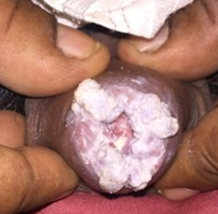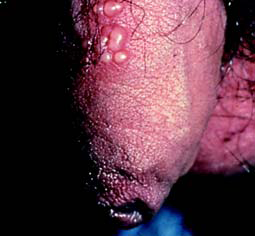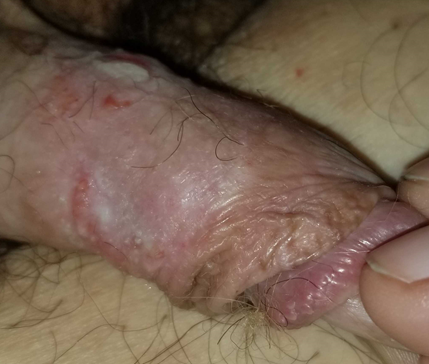How to tell that if you have an STD?
—————————————————————————————————————————————–
Analyze STD (Sexually Transmitted Disease)
Use our Skin Symptom Checker to find what is causing STD (Sexually Transmitted Disease) or STI (Sexually Transmitted infection) on your Skin
 —————————————————————————————————————————————–
—————————————————————————————————————————————–
What is STD (Sexually Transmitted Disease) or STI (Sexually Transmitted infection)?
STD is an infection which is spread through sexual contact, which is through vaginal, oral or anal intercourse. Some STDs may pass through contact with infected blood, needles or from infected mother to baby.
Although some STDs may not have obvious symptoms, there are certain suspicious symptoms which may point towards an STD. Such as;
- Warts on genitals and surrounding skin
- Sores or ulcers on genital area or surrounding anus
- Vesicles or blisters in the genital area and around anus
- Pain or irritation around genitals or anus
There are many features which may suspect you of having a STD, especially if you are sexually promiscuous or have a history of unprotected sex. In the US there has been a rising trend of STDs. Some believe the rising trend is due to hookup apps like Tinder, Grindr and other. STDs can occur even in victims of sexual abuse. Person may be straight or gay. Even if one is faithful to one partner, the partner may not be. So even if a person is not sexually active these should be considered.
If you have symptoms mentioned above and if you suspect that you are infected go to a genitourinary clinic or STD clinic as referrals are not needed, or else even to your general practitioner without delay.
There are some STDs which have skin symptoms which easily point you towards suspicion. They are;
Genital warts


Figure 1 Picture of Genital Warts
When a person is infected with Human papilloma virus he or she may develop genital warts. The genital area may be itching and irritable.
When examined there will be several warts in the genital area (penis or around vagina), which look like tiny cauliflowers. They may be small, greyish, skin coloured or flesh coloured.
Bleeding can occur during intercourse if the warts are damaged.
Genital Herpes


Figure 2 Picture of Genital Herpes
HSV (Herpes Simplex Virus) is a viral infection which is highly contagious. The genital area may be very painful and itching. Small red bumps and blisters occur which are like crops in the genital area. They can rupture and ulcerate, become sore and very painful. Bleeding can occur from sores. Apart from vaginal area in women, lesions can occur also in buttocks and around anus.
In men lesions can occur in penis, scrotum, buttocks and inner thighs.
Urination is very painful due to sores.
Patient can have fever, headache and body aches. There may be swollen lymph nodes in the groin after sometime, especially if the ulcers are infected and oozing.
Syphilis


Figure 3 Picture of Syphilis on Genitals
Syphilis occurs in 3 main stages, Primary, secondary and tertiary or latent syphilis.
Primary Syphilis –
10 days to 3 months after exposure, if you are infected with the bacteria (Treponema pallidum), you can get a small sore which is painless. This may even go unnoticed. The sore is called the chancre and usually it is a single lesion. Although rarely can be multiple. The chancre is seen at the site of infection, commonly genital area, but may be also on lips, tongue, anus etc. This lesion typically heals after sometime even without any treatment.
However the bacteria continue to multiply in the body.
Secondary Syphilis –
3-6 weeks after the first appearance of chancre, the person will get a rash with small sores appearing in the body. The palms and soles can get involved too. There can be associated fever, body aches and there will be enlarged lymph nodes in underarms, groin etc.
This rash will go off with or without treatment in few weeks however it can recur.
Tertiary Syphilis –
Tertiary syphilis doesn’t have skin symptoms. The symptoms are mainly neurological such as numbness, paralysis, headaches, behavioural changes, movement disorders and visual disturbances. They can be severe like blindness and may be even life threatening.
Above described STDs are the ones which commonly cause genital rashes and skin symptoms. However there are other STDs which need to be mentioned which will point towards the person having a sexually transmitted infection.
Gonorrhea
It is a bacterial infection by Neisseria gonorrhoeae, of the genital tract.
In men – painful testis with swelling, pain at urination, thick or bloody discharge from penis
In women – Intermittent bleeding or menorrhagia (heavy periods), vaginal discharge which is thick and bloody, anal itching
Usually there are no skin symptoms or genital rashes.
HIV
Human Immunodeficiency virus infection doesn’t produce symptoms until you develop AIDS (Acquired Immunodeficiency Syndrome). This takes about 10 years or more.
There may be severe fatigue, loss of weight, night sweats, chronic frequent diarrhea, frequent unexplained infections etc.
Chlamydia
This is a bacterial infection (Chlamydia tracomatis) of the genital tract.
In men – painful urination, testicular pain, discharge from penis
In women – vaginal discharge, lower abdominal pain, painful urination, dyspareunia (Pain during intercourse), intermittent bleeding
Usually there are no genital rashes or skin symptoms.
If you have one or more symptoms described above, you may be infected with a sexually transmitted disease. Please go to a qualified medical practitioner without delay. If not there may be severe impacts on health and possibility of infecting others. Home remedies will not work.
At the genitourinary clinic the doctors will examine you carefully, take swabs and blood samples for further investigations and start treatment depending on the infection. The details will be kept confidential. Until your investigations are revealed that you are disease free or complete cure, you should avoid sex or use a condom/ protection to prevent passing the infection to your partner through sexual contact.
If you are confirmed of having an STD, it is your duty to inform your partner/ partners. Even if he / she doesn’t have symptoms they should get evaluated in the clinic to find out whether they are infected too.
Sometimes a person may have more than one STI depending on the sexual exposure.
Prevention of getting a Sexually Transmitted disease
- Limit your sexual contact to one faithful partner
- Use protection – Using a condom properly every time you have sex will help you from getting STDs. However it is not 100% effective as contact with infected skin as in Herpes or Genital warts, you may still catch the infection.
- Do not share towels or undergarments
- Abstinence from any kind of sexual contact (vaginal, oral or anal) is the best way to stay STD free; however it may not be a practical method for most individuals.
- Get yourself tested if you are at risk or whenever there are symptoms which are suggestive
—————————————————————————————————————————————–
Analyze STD (Sexually Transmitted Disease)
Use our Skin Symptom Checker to find what is causing STD (Sexually Transmitted Disease) or STI (Sexually Transmitted infection) on your Skin




